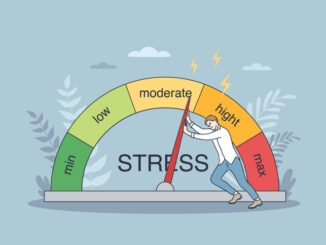
Dashboards of pandemic statistics have dominated screens and helped to track COVID-19 – but David Robertson and Peter Doshi explain why they might not be enough to define its end
CREDIT: This is an edited version of an article that originally appeared on The BMJ
As the year 2021 started the COVID-19 pandemic seemed to be receding. Discussions and predictions about ‘opening up’, a return to ‘normal’, and ‘achieving herd immunity’ were in the air. However, for many, optimism receded as cases and deaths surged in India, Brazil, and elsewhere. Attention turned to SARS-CoV-2 virus variants—most recently, the emergence of omicron; just as the end seemed to be on the horizon, it was interrupted by a foreboding that the pandemic could be a long way from over.
Unlike any previous pandemic, COVID-19 has been closely tracked through dashboards that aim to show the real time movement and effect of coronavirus; they track laboratory testing metrics, hospital and intensive care admissions, transmission rates and, most recently, vaccine doses delivered. These dashboards – with their panels of numbers, statistics, epidemic curves and heat maps – have dominated our televisions, computers and smartphones; at their core is the allure of objectivity and data to grasp onto in the midst of uncertainty and fear. They have helped populations conceptualise a need for rapid containment and control, directing public sentiment, fuelling pressure for countermeasures, and maintaining an aura of emergency. They offer a sense of control when cases are coming down following certain countermeasures – but can also drive a sense of helplessness, and impending catastrophe, when cases rise.
Problems defining pandemic endings
There is no universal definition of the epidemiological parameters of the end of a pandemic; by what metric, then, will we know that it has actually ended? The World Health Organization declared the COVID-19 pandemic, but who will tell us when it’s over?
The ubiquity of dashboards has helped create a sense that the pandemic will be over when the dashboard indicators all reach either zero (infections, cases, deaths) or 100 (percentage vaccinated). However, respiratory pandemics of the past century show that endings are not clear cut, and that pandemic closure is better understood as occurring with the resumption of social life, not the achievement of specific epidemiological targets.
Respiratory pandemics of the past 130 years have been followed by annual seasonal waves, fuelled by viral endemicity that, typically, continues until the next pandemic. What goes down comes back up, and the difficulty in dating the end of a pandemic is reflected in the historical and epidemiological literature. Although many scholars describe the Spanish ‘flu as occurring across three waves from 1918 to 1919, references to the 1918 to 1920 pandemic are also abundant, usually capturing what some call a ‘fourth wave’. Similarly, the mid-century ‘Asian ‘flu’ pandemic is generally described as a two-wave event from 1957 to 1958 – but others include a third wave, placing the pandemic’s end in 1959.
This variability in dating historical pandemics highlights the imprecise nature of using death rates to determine, even retrospectively, the ‘end’ of a pandemic and the start of the inter-pandemic period. For example, Centers for Disease Control and Prevention today states that around 100,000 Americans died in each of the 1957 and 1968 influenza pandemics – but these estimates include deaths taking place at times most would consider to be between pandemics (1957-1960 and 1968-1972, respectively).
The notion, reinforced by dashboards, that a pandemic ends when cases or deaths drop to zero is at odds with the historical evidence that substantial influenza morbidity and mortality continues to occur, season after season, between pandemics. In the inter-pandemic season of 1928-29, for example, over 100 000 excess deaths related to influenza A/H1N1 (the 1918 pandemic virus) are estimated to have occurred in the United States in a population one third the size of today’s. Furthermore, it can be challenging to discern which deaths can be attributed to the pandemic and which belong in the inter-pandemic period; these distinctions are not trivial, as excess mortality is the classic metric for assessing severity. Inter-pandemic years have sometimes had higher death tolls than the pandemic seasons that followed, such as the 1946-47 season that preceded the 1957-58 pandemic season. Hence, a pandemic’s end cannot be defined by the absence of excess deaths associated with the pandemic pathogen.
The end of the pandemic will not be brought to you
History suggests that the end of the pandemic will not simply follow the attainment of herd immunity, or an official declaration, but rather it will occur gradually and unevenly as societies cease to be all consumed by the pandemic’s shocking metrics. Pandemic ending is more of a question of lived experience and, thus, is more of a sociological phenomenon than a biological one, so dashboards – which do not measure mental health, educational impact or the denial of close social bonds – are not the tool that will tell us when the pandemic will end. Indeed, considering how societies have come to use dashboards, they may be a tool that helps prevent a return to normal.
Pandemics – at least respiratory viral pandemics – simply do not end in a manner amenable to being displayed on dashboards. Far from a dramatic ‘end’, pandemics gradually fade as society adjusts to living with the new disease agent and social life returns to normal. As an extraordinary period in which social life was upturned, the COVID-19 pandemic will be over when we turn off our screens and decide that other issues are once again worthy of our attention.
Unlike its beginning, the end of the pandemic will not be televised.



Be the first to comment